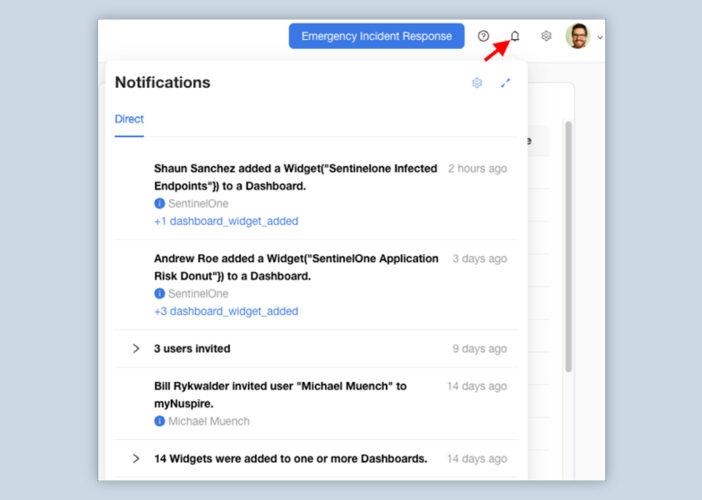Understanding the Value of Threat Intelligence
Companies today need to keep tabs on many evolving cyber threats, from sophisticated malware to stealthy phishing attacks. Complicating matters is that different threat actors with varying motivations target sectors with specific attacks and tactics.
Cyber threat intelligence helps you stay ahead of attackers by providing a deep understanding of potential cyber threats and their origins. Here’s why this understanding is so important in today’s threat landscape.
The Value of Threat Intelligence
Serves a Wide Variety of Users
The three main types of cyber threat intelligence show how this data can serve a wide variety of needs and roles.
- Tactical threat intelligence focuses on the immediate and provides details like signatures, indicators of compromise and specific malware hashes. Frontline defenders like incident responders and security analysts use this data to identify and respond to current threats on the network.
- Operational threat intelligence delves deeper into the methodologies and tactics of specific threat actors. This information provides insights into how and why a particular cyberattack occurred and contextualizes the techniques employed. Companies and CISOs aiming to understand their adversaries’ motivations and the broader context of an attack can use this type of insight to improve defenses.
- Strategic threat intelligence takes a broader view by offering a high-level analysis of long-term trends and emerging threats. This type of data often focuses on geopolitical events, evolving cyber regulations or emerging technologies that might shape the future threat landscape. Decisionmakers, such as C-suite executives and board members, use strategic intelligence to shape cybersecurity policies and long-term planning.
Provides proactive cyber defense
Threat intelligence isn’t just about understanding threats but predicting them. With a clearer picture of potential security risks, you can fortify your cyber defenses in advance and transition from reactive to proactive security measures. The essence of proactive cybersecurity lies in anticipating threats before they manifest, which allows organizations to act rather than react.
At a fundamental level, cyber threat intelligence collects and analyzes data from various sources, both open-source and proprietary. This data could include anything from chatter on dark web forums about a new exploit to analyzing the behavior of new malware strains in a sandboxed environment. The objective is to derive actionable insights from this data.
For example, suppose an indicator of compromise (IoC) points to a particular IP address as being associated with a known command-and-control server for a specific botnet. In that case, you can configure your firewall to block traffic to and from that IP address automatically. Similarly, more advanced forms of intel might analyze heuristics or behavior patterns like the rapid movement of data to an external server or unauthorized attempts to escalate privileges on a system. Using this insight, security tools can proactively detect and counteract malicious activities.
Tailored security insights
A core tenet of the value of cyber threat intelligence lies in its ability to cut through the noise and offer specificity. While generalized threats apply across industries, many are more relevant to specific sectors, company sizes or geographies. For example, the recently observed xenomorph banking trojan is highly relevant only for financial institutions.
Cyber threat intelligence categorizes and prioritizes threats based on their prevalence or potential impact within specific industries. By analyzing attacks that have targeted similar institutions or monitoring threat actors known to target specific sectors, threat intelligence offers a precise view of the risk landscape for any given industry.
The digital profile and size of a company can determine its threat landscape. Larger corporations might face advanced persistent threats (APTs) and well-coordinated espionage, while smaller businesses might be more susceptible to broad-spectrum phishing campaigns or ransomware. Threat intel also accounts for these differences.
Lastly, companies face unique cyber risks based on their mix of third-party vendors, partners and suppliers. Threat intelligence provides insights into risks associated with these external companies. If a primary vendor or partner has been compromised or is consistently targeted, that poses a direct risk to you.
A couple of statistics also point to the growing value of threat intelligence in cybersecurity:
- A study from 2020 found that 71% of organizations that used cyber threat intelligence experienced improved incident response.
- The market size for cyber threat intel is projected to grow from $4.93 billion in 2023 to $18.11 billion by 2030. This is a remarkable 20.4% annual growth rate projection.
Options for Organizations without In-house Intel Gathering Capabilities
One problem with threat intel is that building an in-house threat intelligence gathering capability calls for significant resources—skilled personnel, advanced tools, continuous training and often, a global perspective. Many organizations, especially SMEs, may find this overwhelming. Some good options worth considering include:
- Threat intel platforms—Several third-party proprietary platforms provide aggregated threat data, analyzed by experts and made available in a digestible format. These platforms often integrate with your existing security tools to improve visibility and response capabilities.
- Open-source threat intelligence (OSINT)—Various resources and security researchers offer free, open-source threat intelligence feeds and repositories. Though they might require more validation and filtering, these OSINT sources are a good starting point if you’re on a tight budget.
- Managed security service providers (MSSPs)—MSSPs offer comprehensive security services, including threat intelligence. They can monitor an organization’s network, identify threats, respond to incidents and provide valuable cyber expertise without needing internal threat intel teams.
How Nuspire Empowers Your Business with Cyber Threat Intel
Providing decision-makers with evidence-based, contextually analyzed, and relevant info about cyber threats is what makes good threat intel so powerful. At Nuspire, our cybersecurity consulting services include threat modeling, with actionable insights into the tactics and techniques most likely to be used against your organization.

